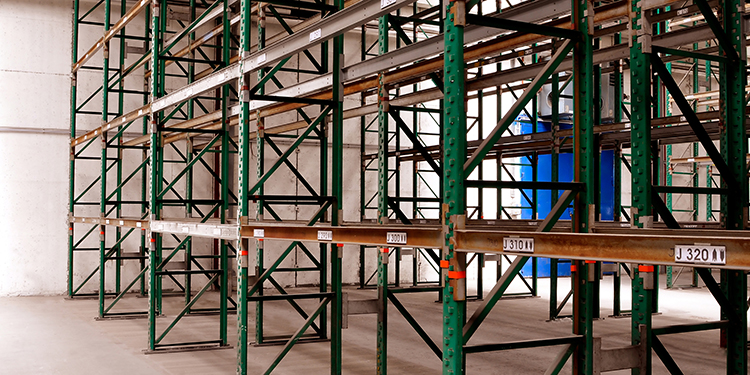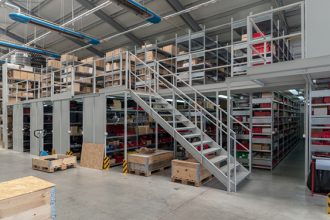Thinking About Buying Used Rack? Consider These Factors Before Signing The Purchase Order

There’s an extensive market for used pallet storage rack, typically made available because its former warehouse home has been shuttered or the system has been replaced. Although it’s true that used storage rack is often priced at a discount over a new system, the reality is that the risk of purchasing what might be a sub-standard product that might not provide a safe working environment is high. That’s because the system may or may not meet current RMI standards and building codes, nor has it been engineered for your unique application, but rather for someone else’s. As a result, the used rack may be prone to failure or collapse.
To reduce those risks — including the potential costs of worker injuries, product damage or loss, facility damage, downtime, lost productivity, increased insurance premiums and more — it is critical to consider several factors before signing the purchase order for a used rack system.
These include:
Conformance to RMI Design Standards. RMI’s publication “Considerations for the Planning and Use of Industrial Steel Storage Racks” Section 3.2 notes: “When purchasing storage rack, new or used, it should be clearly spelled out in the request documents and in the purchase order that the racks must be designed in accordance with the latest edition of the RMI Specification and Commentary.” This ensures that the system adheres to the latest safe design, engineering and use standards developed by the Rack Manufacturer’s Institute, whose members are the industry’s leading suppliers of industrial steel storage racks and related structural systems.
Inclusion of Engineering Calculations and Drawings. The best, safest practice is to have all appropriate documentation on the used rack system reviewed and approved by a qualified professional rack engineer prior to purchase. Working with an engineer to manage and direct the selection, design and installation of the used rack system will help a buyer ensure that the used rack system in consideration will be safe and meet required building codes.
Identify the Original Rack Manufacturer (OEM). Knowing which company originally designed and produced the system can help a seller or buyer more easily obtain the original load application and rack configuration (LARC) drawings and documentation to assist the professional engineer’s evaluation of the used rack. If the manufacturer is no longer in business, or documentation is not available, be particularly wary of buying it.
Availability of Prior Building Permits. The majority of state, county, or local municipalities require industrial steel storage rack systems to be permitted and inspected to verify the structure’s safety and design in order to receive a certificate of occupancy. If the system was permitted, it may be easier to collect information about the racking.
Current Condition Assessment. Prior to purchase and installation, the used components should be inspected by the qualified rack engineer who will assess its current condition and make recommendations regarding repair or replacement. Damaged or repaired components should not be used.
State of Refurbishment or Modification. Many resellers “refurbish” used rack before offering it in the secondary market. While repainting may be acceptable and improve the appearance of the components, refurbished rack with any re-welds or modifications should be avoided. It is very difficult to make a safe weld on a product that is already painted (the weld may be contaminated) and alterations not approved by a professional engineer are likely to be of high risk.
Determination of Prior Installation Location. The geographic region in which the used rack was previously installed plays a significant factor in how it was designed and manufactured. If it was located in an area with a high potential for seismic activity — such as on the West Coast and other parts of the country — then it was likely engineered to withstand potential earthquakes. Conversely, the used rack may have been designed for an area of low or no seismic activity. Rack not designed for the seismic area that is relocated to can collapse in an earthquake.
Be Wary of Mixed-And-Matched Systems. Just because components from different manufacturers may fit together or appear similar, they are not. That’s because connecting incompatible members that were originally designed and engineered to work within a specific system significantly increases the risk of a structural failure and collapse.
Still considering buying used rack? For additional details about how to ensure a safe used rack installation, visit the RMI website.


